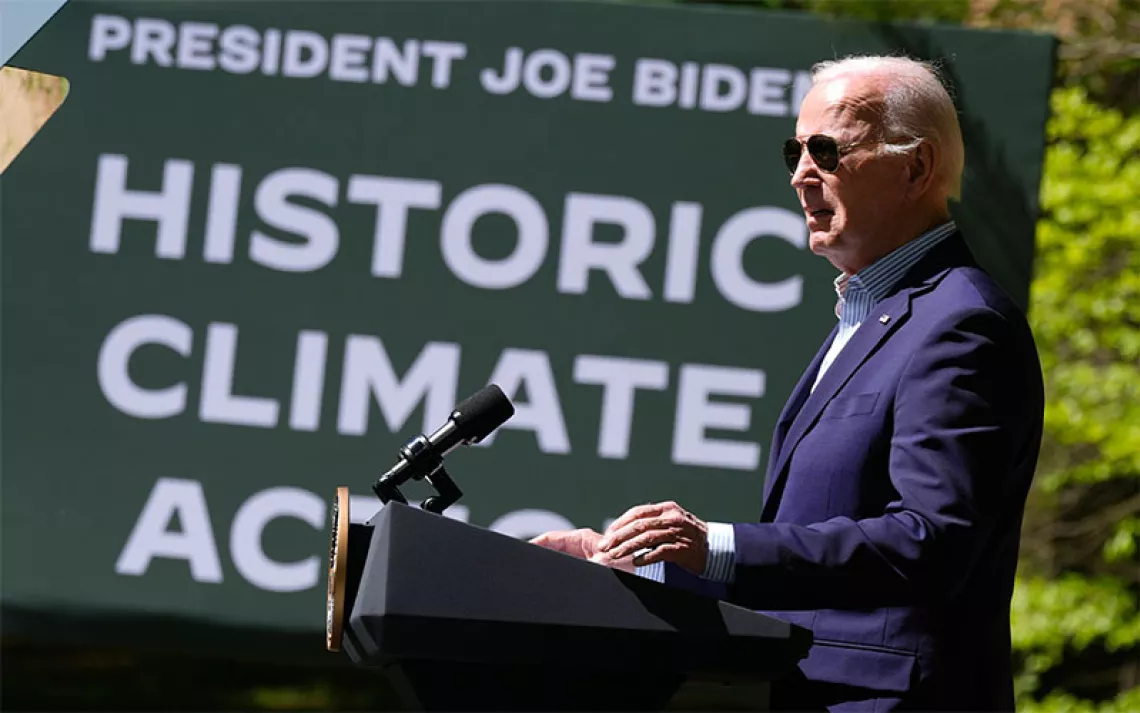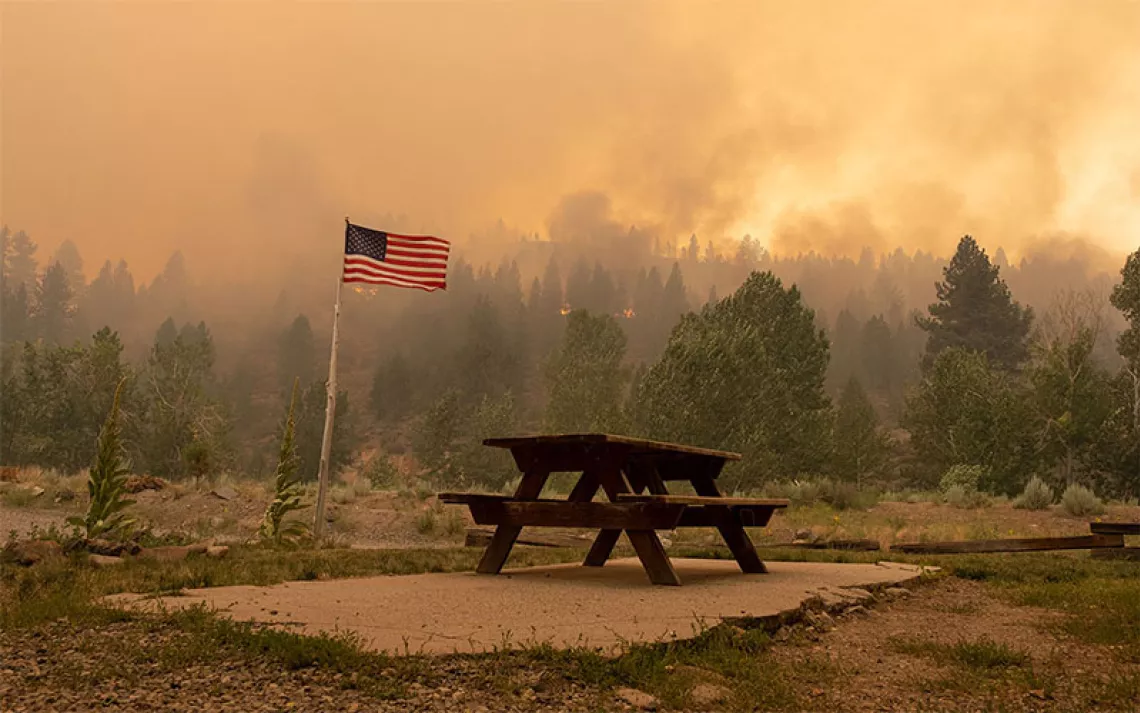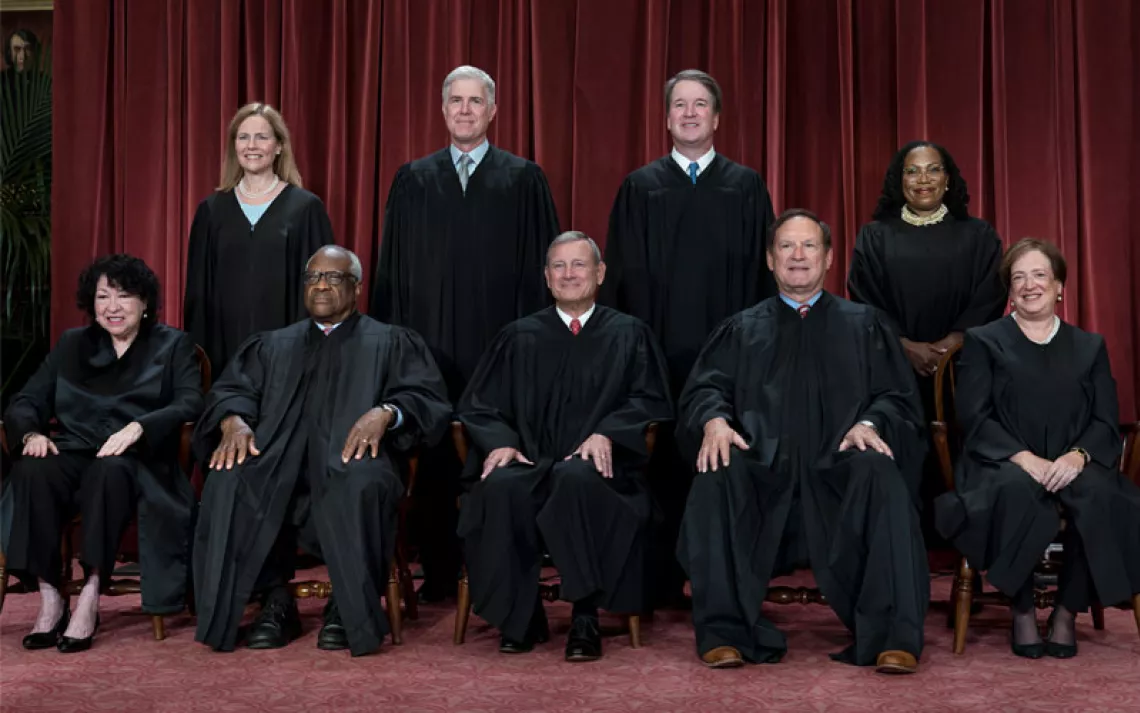What Does Cloture Have to Do With Climate Change?
A reconciliation bill glossary for these complicated times

The rotunda of the US Capitol Building. | Photo by DK Fielding | iStock
The FY2022 federal budget contains some of the most important climate policy of our lives. Some of it isn’t specifically about climate but will nonetheless have huge impacts on emissions. The construction of affordable housing in the nation’s increasingly unaffordable cities, for example, will help low-income people who are most likely to have old cars with terrible emissions drive less—or not at all. Making existing affordable housing more energy efficient is sound climate policy as well as an anti-poverty measure. Other aspects of the budget, like the maybe-it’s-dead-and-maybe-it-isn’t Clean Energy Performance Program (CEPP), are clearly aimed at cutting fossil fuel emissions (more on that below). All of these proposals have been designed to fit into a reconciliation bill—an arcane, complicated form of budgeting that Congress resorts to when all is not harmonious in the halls of government.
Reconciliation bills are a little younger than disco. They were created as part of the Congressional Budget Act of 1974 to limit presidential power over the federal budget (which it did) and to simplify and speed up the budget process (debatable). Since the first reconciliation bill (the Omnibus Reconciliation Act of 1980) was passed, the US budget has seen a reconciliation package every few years—sometimes every year—and passed some of the most consequential policies of our time this way. The last reconciliation bill, the American Rescue Plan Act of 2021 (a.k.a. the COVID-19 Stimulus Package or the American Rescue Plan), passed just last March.
But for all the power that budget reconciliation has had (and still has, and will have) over our lives, it’s not something that is easy to talk about casually. Maybe you’d like to change that? Drop some budget talk into your next kaffeeklatsch? Here’s a glossary to help get you going.
Clean Energy Performance Program (CEPP)
In the early 1900s, when the basic framework for how utilities would work in the United States was hammered out, the goal was to make as much electricity as possible. It didn’t matter where the electricity came from or how much pollution was produced in the process, as long as the factory down the street could keep its lights on. Under this system, utilities made most of their money by building new stuff—more power plants, more substations—and had very little incentive to protect public health by cutting emissions or promoting energy conservation. Utilities had even less incentive to help (and quite a lot of incentive to destroy) entire classes of renewable technology, like distributed smart grids that could just buy electricity during a heat wave from households with solar panels instead of breaking ground on a new gas peaker plant.
Beginning in the 1980s, states began to use money to persuade utilities to change their ways. Sometimes the money was used as a carrot (utilities get paid for using different energy sources), sometimes as a stick (utilities get fined for failing to change their ways).
Every entity that did this used different language to describe what they were doing. Names and specifics and acronyms for programs like these evolve as fast as Cambrian-era lifeforms, from Renewable Portfolio Standard (RPS) to Clean Energy Standard (CES) to Renewable Energy Standard (RES) to Alternative Energy Standard (AES) to Clean Energy Portfolio Goal (CEPG) to Renewable Energy Goal (REG) to Alternative Energy Law (AEL), to name a few. Each proposal, whether it be state or national, is slightly different on all kinds of details, like what actually counts as clean energy (some allow nuclear; some allow fracked gas, biomass, and coal plants with some carbon capture attached).
The CEPP was once called the Clean Energy Standard (CES). After the CES was effectively cut from the infrastructure bill, it re-emerged as the Clean Energy Performance Program (CEPP). In this form, it’s more carrot than stick—there are no penalties for utilities that fail to reach 80 percent clean electricity sales by 2030. Last Friday, The New York Times shared a rumor that Senator Joe Manchin (D-W.Va.), who earns hundreds of thousands per year through a family company that just happens to be in the coal business, has refused to vote for any version of the reconciliation bill that has the CEPP in it, so this particular acronym’s time may also be running out.
Technology Neutral
The CEPP is currently technology-neutral, which means that as long as emissions are below a certain level—in this case, a carbon intensity of less than 0.10 metric tons of carbon dioxide per megawatt-hour—the electricity is considered “clean” and other environmental drawbacks aren’t taken into consideration. Nuclear, hydropower, geothermal, and fossil fuel plants that capture carbon and use it to make chemicals could all potentially qualify as clean energy and therefore deserving of federal subsidies. So could natural gas that is produced via carbon capture. Senator Joe Manchin, who you hopefully remember from the first definition, has worked assiduously to expand the CEPP’s definition of clean energy to include more fossil fuels.
Senate Parliamentarian
This is a civil servant (not an elected official) who functions as a nonpartisan referee for what goes on in the Senate—which means that they hold power over what can and can’t be included in a reconciliation bill. The current parliamentarian, Elizabeth MacDonough, denied a move to increase the federal minimum wage from $7.25 to $15 an hour in February’s $1.9 trillion Coronavirus relief package (which was also a reconciliation bill) and another to open a path to citizenship to Dreamers, farmworkers, and immigrants who qualify for Temporary Protected Status on humanitarian grounds. MacDonough has not yet weighed in on whether the CEPP stays or goes.
Cloture
Also called by another French word—guillotine—this is a motion or process that can be used to bring debate to a quick end and force a vote. It’s been used to end filibusters in the Senate since 1917. When people talk about changing the filibuster (which they do often, especially since outright eliminating it would take a near-impossible ⅔ Senate vote) changing the terms of cloture is often involved. For example, it used to take a ⅔ vote to invoke cloture; since 1975 it’s only taken ⅗. That majority could go even lower. Cloture also takes a long time to carry out for something that was designed to speed legislation, so speeding up the process of getting cloture is another way that the filibuster could change.
Budget Resolution
This is what has to get passed by Congress in order to create a budget reconciliation bill. Essentially, the budget is parceled out to 13 committees, which each come up with their own recommendations for what to budget for in their area of expertise and later vote to combine them into a bill. This time around, the resolution is called the Build Back Better Plan.
Fossil Fuel Subsidies
It’s already well established that climate change is more than just a moral issue—it’s more fiscally prudent to switch to clean energy than it is to maintain the status quo. One way to make a $3.5 trillion budget package even more financially sound would be to end the subsidies that fossil fuel companies have enjoyed for decades—like the tax deduction for “intangible drilling costs,” which allows oil and gas companies to deduct any wages, fuel, supplies, repairs, survey work, and ground clearing that they pay for when trying to drill a well (the US Treasury estimates this loses about $1,495,000 million in tax revenue every year). Or the way that companies that mine and drill for fossil fuels can claim tax deductions that were designed to keep companies that manufacture goods in the US from moving operations overseas (estimated loss of tax revenue: $1,250,000 million). A few senators, like Joe Manchin (D-W.Va.) are fighting tooth and nail to make sure that these subsidies stay in place.
Climate Conservation Corps
One of the most popular aspects of the New Deal was the Civilian Conservation Corps—nearly all Americans have traveled on roads, crossed bridges, sheltered in buildings, and otherwise depended on infrastructure that was built by the corps during the Great Depression. A Climate Conservation Corps that is currently a part of the reconciliation bill could tackle the backlog of maintenance on public lands, help cities prepare for, recover from, and adapt to climate-related disasters, turn heat islands into city parks, restore wetlands in hurricane country, retrofit buildings to be more energy-efficient, and learn the kind of infrastructure-related skills that the country needs more of, instead of being forced into low-wage, low-skill jobs. It would humanize climate policy, which can often seem distant, technocratic, and benefiting the wealthiest parts of the country.
That’s if the CCC’s budget survives the reconciliation process, though. The CCC’s supporters have already adjusted their hopes downward, from $132 million to $30 million.
ANWR (a.k.a. Arctic National Wildlife Refuge)
In September, the House Natural Resources Committee added something of its own to the reconciliation bill—a reversal of a 2017 law that forced the Bureau of Land Management to begin selling leases to drill for oil in the Arctic National Wildlife Refuge. That 2017 law was also passed as part of a reconciliation budget, but one led by a Republican-controlled Congress and Senate.
AML (Abandoned Mine Lands)
In July, Senate Energy and Natural Resources Committee Chairman Joe Manchin (yes, him again) worked with the committee to authorize $11.3 billion in new funding for abandoned mine land (AML) reclamation projects. The fund will help clean up polluted landscapes in coal country, but, in a perverse twist, the stuff that’s being cleaned up can also be burned for energy at Joe Manchin’s family coal plant. In other words, not all habitat restoration is what it seems.
1.5 Degrees C
In September, in a speech at the United Nations General Assembly, Biden said, “To keep within our reach the vital goal of limiting global warming to 1.5 degrees Celsius, every nation needs to bring their highest-possible ambitions to the table when we meet in Glasgow for COP26.” That “every nation” includes this one, especially since the UN weather agency says that we could reach 1.5 degrees C of warming by 2024.
That 1.5°C (2.7°F) target comes from the Intergovernmental Panel on Climate Change (IPCC), which was created by the United Nations Environmental Programme and the World Meteorological Organization in 1988 to serve as a trusted source of information about climate change. The IPCC’s climate reports are written by volunteer scientists from around the world who synthesize the results of peer-reviewed climate studies and decide—by consensus—how to interpret their conclusions.
In 2018, three years after 197 nations agreed to work together to prevent atmospheric warming of more than 2°C (3.6°F), the IPCC, which has a reputation for being overly cautious in its climate risk assessments, released a barn-burner of a report stating that 2°C was most emphatically not going to cut it. All the dire climate effects predicted to happen at 2°C of warming—the collapse of 90 percent of the world’s coral reefs, the crash of marine and coastal ecosystems beyond the point of recovery, the increase in the kind of floods, heat waves, polar vortexes, wildfires, hurricanes, and tropical cyclones that already dominate the news—will likely occur much sooner, at 1.5°C.
This year the IPCC released a new report stating that 1.5°C of warming was now inevitable and locked into the climate for the next 30 years. If countries immediately lower emissions, though, the planet will begin to cool around the middle of the century. That’s why, no matter what acronyms we use, it’s more important to understand the federal budget than ever—and to make sure that this and every budget after keeps steering the US into 2050 with as few floods, hurricanes, derechos, and heat waves as possible.
 The Magazine of The Sierra Club
The Magazine of The Sierra Club



